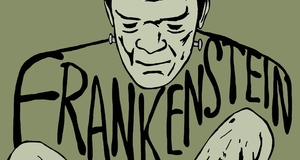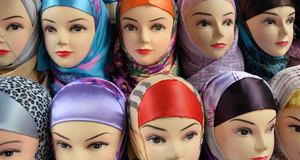Women as the Submissive Sex in Mary Shelley's Frankenstein
By
2010, Vol. 2 No. 01 | pg. 1/1
KEYWORDS:
In Mary Shelley’s Frankenstein, the author characterizes each woman as passive, disposable and serving a utilitarian function. Female characters like Safie, Elizabeth, Justine, Margaret and Agatha provide nothing more but a channel of action for the male characters in the novel. Events and actions happen to them, usually for the sake of teaching a male character a lesson or sparking an emotion within him. Each of Shelley’s women serves a very specific purpose in Frankenstein. First, Justine’s character is a very passive, seldom vocal character in the novel. She is tossed back and forth between her family and the Frankensteins, until she is ultimately framed for the murder of William Frankenstein. Justine defies the expectations of one wrongfully accused of manslaughter, remaining tranquil and peaceful. In her own words, she explains “God knows how entirely I am innocent. But I do not pretend that my protestations should acquit me; I rest my innocence on a plain and simple explanation of the facts…” (65). Not only do her speech and actions demonstrate passivity, but the simple act of being framed proves this to be the purpose behind her character: “But I have no power of explaining it…I am only left to conjecture concerning the probabilities by which it might have been placed in my pocket” (66). Thus, Justine becomes an inactive, docile victim of circumstance.The next female character encountered is the young cottager’s daughter Agatha, whom the monster studies. Agatha’s purpose, as a kind and gentle female, is to exhibit and embody all virtue and sensitivity. These are the first lessons learned by the monster; he has never seen such tenderness before now. Agatha most moves him in her interactions with her blind father: “Agatha listened with respect, her eyes sometimes filled with tears, which she endeavored to wipe away unperceived” (93). Agatha’s female character, through its inactive and tender nature, serves to teach the monster his first lessons on healthy human relationships and love. The monster’s next lesson comes from another female close to Agatha. When Safie arrives at the cottagers’ from Arabia, she must be tutored to learn English. As the monster continues his observances of the happy family, Safie’s lessons become his own as well. Thus, because of a passive female, the monster’s first academic education results: “My days were spent in close attention…and I may boast that I improved more rapidly than the Arabian…I could imitate almost every word that was spoken…I also learned the science of letters” (99). It is inconsequential to the novel whether Safie herself learns the language, as long as the lessons being taught to her are influencing and furthering the monster. She is a means to his educational end, becoming yet another passive, action-channeling female character. Perhaps the most important emotional channel in the novel is Frankenstein’s betrothed Elizabeth. Described as a submissive, gentle character from the beginning, Elizabeth has always been a soft spot for her fiancé. Frankenstein views her as a possession: “I looked upon Elizabeth as mine - mine to protect, love and cherish. All praises bestowed on her I received as made to a possession of my own” (21). Frankenstein’s monster, well aware of this weakness and filled with the madness that results from parental neglect, murders Elizabeth in order to hurt his creator as deeply as possible. Even when her life is threatened, however, Frankenstein still holds the game of wits between himself and his monster above protecting Elizabeth. Instead of staying with her and guarding her on his wedding night, he patrols the premises: “She left me, and I continued some time walking up and down the passages of the house and inspecting every corner that might afford a retreat to my adversary…when suddenly I heard a shrill and dreadful scream” (173). Elizabeth has become another inert victim in this game of insanity and male-centered mayhem. She has been demeaned and reduced to a simple tool of revenge, along with the other female characters appearing in Frankenstein. Lastly, Margaret’s character has perhaps the most passive role of all. She is useful to us as an audience because without her, there is no reason for Walton to relay his story. Yet, we never meet this character nor do we know if she really exists, if she ever reads the story and gets the letters, or if she has anything to say about it. She is the most distant and passive female character in the novel and also the most necessary to the novel as a whole. Though all of the female characters mentioned were created by a female author, each of them has a very demeaning characterization. Shelley’s women are objectified, used, abused, and easily discarded. None of them, save Margaret, survive the novel and all of them live their fictional lives to serve a very specific function and impact a man’s life. ReferencesShelley, Mary Wollstonecraft. Frankenstein, or, The modern Prometheus. London: Penguin Books, 2003. Suggested Reading from Inquiries Journal
Inquiries Journal provides undergraduate and graduate students around the world a platform for the wide dissemination of academic work over a range of core disciplines. Representing the work of students from hundreds of institutions around the globe, Inquiries Journal's large database of academic articles is completely free. Learn more | Blog | Submit Latest in Literature |













